Below you will find a list of Forex Brokers accepting US clients. Due to the strict and complicated regulatory environment, it became quite a challenge for FX brokers to operate in the United States. To make it worse, due to the Dodd-Frank Act and the Memorandum of Understanding, many intertational forex brokers all over the world stopped accepting traders from the USA. Still, there are some distant offshore countries where local authorities haven't yet imposed the restrictions. Unfortunately, most easy-going offshore brokers are not overseen or regulated, although that's exactly the reason why there's this opportunity to open a trading account with them. Notable benefits of going offshore are: no hedging prohibition, no FIFO rule application, and really high trading leverage.

 PlexyTrade (2024)
Leverage: up to 1:2000
Deposit: from 50 USD
Spreads:
PlexyTrade (2024)
Leverage: up to 1:2000
Deposit: from 50 USD
Spreads: 





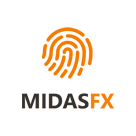 MidasFX (2023)
Leverage: up to 1:1000
Deposit: from 1 USD
Spreads:
MidasFX (2023)
Leverage: up to 1:1000
Deposit: from 1 USD
Spreads: 





 ZForex (2022)
Leverage: up to 1:1000
Deposit: from 10 USD
Spreads:
ZForex (2022)
Leverage: up to 1:1000
Deposit: from 10 USD
Spreads: 







 DefcoFX (2024)
Leverage: up to 1:2000
Deposit: from 50 USD
Spreads:
DefcoFX (2024)
Leverage: up to 1:2000
Deposit: from 50 USD
Spreads: 



 ScoreCM (2024)
Leverage: up to 1:1000
Deposit: from 10 USD
Spreads:
ScoreCM (2024)
Leverage: up to 1:1000
Deposit: from 10 USD
Spreads: 





 TradeSmart (2024)
Leverage: up to 1:2000
Deposit: from 50 USD
Spreads:
TradeSmart (2024)
Leverage: up to 1:2000
Deposit: from 50 USD
Spreads: 





 Grand Capital (2006)
Leverage: up to 1:1000
Deposit: from 10 USD
Spreads:
Grand Capital (2006)
Leverage: up to 1:1000
Deposit: from 10 USD
Spreads: 















 No1 Capital Markets (2017)
Leverage: up to 1:1000
Deposit: from 5 USD
Spreads:
No1 Capital Markets (2017)
Leverage: up to 1:1000
Deposit: from 5 USD
Spreads: 










 Hankotrade (2018)
Leverage: up to 1:500
Deposit: from 10 USD
Spreads:
Hankotrade (2018)
Leverage: up to 1:500
Deposit: from 10 USD
Spreads: 




 Capitalcore (2019)
Leverage: up to 1:2000
Deposit: from 10 USD
Spreads:
Capitalcore (2019)
Leverage: up to 1:2000
Deposit: from 10 USD
Spreads: 




 HeroFX (2022)
Leverage: up to 1:500
Deposit: from 5 USD
Spreads:
HeroFX (2022)
Leverage: up to 1:500
Deposit: from 5 USD
Spreads: 





 Fyntura (2023)
Leverage: up to 1:500
Deposit: from 10 USD
Spreads:
Fyntura (2023)
Leverage: up to 1:500
Deposit: from 10 USD
Spreads: 





 Lotas Capital (2017)
Leverage: up to 1:500
Deposit: from 100 USD
Spreads:
Lotas Capital (2017)
Leverage: up to 1:500
Deposit: from 100 USD
Spreads: 




 DuraMarkets (2024)
Leverage: up to 1:1000
Deposit: from 10 USD
Spreads:
DuraMarkets (2024)
Leverage: up to 1:1000
Deposit: from 10 USD
Spreads: 



 Market101 (2022)
Leverage: up to 1:1000
Deposit: from 50 USD
Spreads:
Market101 (2022)
Leverage: up to 1:1000
Deposit: from 50 USD
Spreads: 



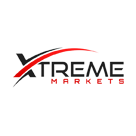 Xtream Markets (2015)
Leverage: up to 1:1000
Deposit: from 5 USD
Spreads:
Xtream Markets (2015)
Leverage: up to 1:1000
Deposit: from 5 USD
Spreads: 










 UnitedPips (2024)
Leverage: up to 1:1000
Deposit: from 10 USD
Spreads:
UnitedPips (2024)
Leverage: up to 1:1000
Deposit: from 10 USD
Spreads: 






 SageFX (2020)
Leverage: up to 1:500
Deposit: from 10 USD
Spreads:
SageFX (2020)
Leverage: up to 1:500
Deposit: from 10 USD
Spreads: 






 Nash Markets (2020)
Leverage: up to 1:500
Deposit: from 10 USD
Spreads:
Nash Markets (2020)
Leverage: up to 1:500
Deposit: from 10 USD
Spreads: 





 AZAforex (2016)
Leverage: up to 1:1000
Deposit: from 1 USD
Spreads:
AZAforex (2016)
Leverage: up to 1:1000
Deposit: from 1 USD
Spreads: 














 Tradiso (2021)
Leverage: up to 1:100
Deposit: from 100 USD
Spreads:
Tradiso (2021)
Leverage: up to 1:100
Deposit: from 100 USD
Spreads: 






 AAFX (2015)
Leverage: up to 1:2000
Deposit: from 100 USD
Spreads:
AAFX (2015)
Leverage: up to 1:2000
Deposit: from 100 USD
Spreads: 







 Solid ECN (2021)
Leverage: up to 1:1000
Deposit: from 1 USD
Spreads:
Solid ECN (2021)
Leverage: up to 1:1000
Deposit: from 1 USD
Spreads: 






 EagleFX (2019)
Leverage: up to 1:500
Deposit: from 10 USD
Spreads:
EagleFX (2019)
Leverage: up to 1:500
Deposit: from 10 USD
Spreads: 


 CryptoAltum (2020)
Leverage: up to 1:500
Deposit: from 0.0001 BTC
Spreads:
CryptoAltum (2020)
Leverage: up to 1:500
Deposit: from 0.0001 BTC
Spreads: 






 LHFX (2020)
Leverage: up to 1:500
Deposit: from 10 USD
Spreads:
LHFX (2020)
Leverage: up to 1:500
Deposit: from 10 USD
Spreads: 


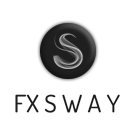 FxSway (2021)
Leverage: up to 1:500
Deposit: from 10 USD
Spreads:
FxSway (2021)
Leverage: up to 1:500
Deposit: from 10 USD
Spreads: 

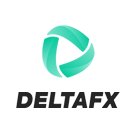 DeltaFX (2009)
Leverage: up to 1:1000
Deposit: from 1 USD
Spreads:
DeltaFX (2009)
Leverage: up to 1:1000
Deposit: from 1 USD
Spreads: 



 PrimeBit (2019)
Leverage: up to 1:200
Deposit: from 0.0001 BTC
Spreads:
PrimeBit (2019)
Leverage: up to 1:200
Deposit: from 0.0001 BTC
Spreads: 






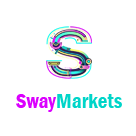 Sway Markets (2022)
Leverage: up to 1:500
Deposit: from 20 USD
Spreads:
Sway Markets (2022)
Leverage: up to 1:500
Deposit: from 20 USD
Spreads: 




 Forex.com (2001)
Leverage: up to 1:50 *
Deposit: from 100 USD
Spreads:
Forex.com (2001)
Leverage: up to 1:50 *
Deposit: from 100 USD
Spreads: 

 ATC Brokers (2005)
Leverage: up to 1:200 *
Deposit: from 2000 USD
Spreads:
ATC Brokers (2005)
Leverage: up to 1:200 *
Deposit: from 2000 USD
Spreads: 



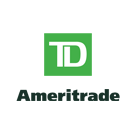 TD Ameritrade (1975)
Leverage: up to 1:50 *
Deposit: from 20 USD
Spreads:
TD Ameritrade (1975)
Leverage: up to 1:50 *
Deposit: from 20 USD
Spreads: 
 Interactive Brokers (1978)
Leverage: up to 1:50 *
Deposit: from 20 USD
Spreads:
Interactive Brokers (1978)
Leverage: up to 1:50 *
Deposit: from 20 USD
Spreads: 
 Oanda (2001)
Leverage: up to 1:50 *
Deposit: from 20 USD
Spreads:
Oanda (2001)
Leverage: up to 1:50 *
Deposit: from 20 USD
Spreads: 




 Nadex (2009)
Leverage: up to ---
Deposit: from 250 USD
Spreads:
Nadex (2009)
Leverage: up to ---
Deposit: from 250 USD
Spreads: 

 Pocket Option (2017)
Leverage: up to ---
Deposit: from 10 USD
Spreads:
Pocket Option (2017)
Leverage: up to ---
Deposit: from 10 USD
Spreads: 













 GC Option (2006)
Leverage: up to ---
Deposit: from 10 USD
Spreads:
GC Option (2006)
Leverage: up to ---
Deposit: from 10 USD
Spreads: 












 CloseOption (2015)
Leverage: up to ---
Deposit: from 1 USD
Spreads:
CloseOption (2015)
Leverage: up to ---
Deposit: from 1 USD
Spreads: 










 Quotex (2019)
Leverage: up to ---
Deposit: from 10 USD
Spreads:
Quotex (2019)
Leverage: up to ---
Deposit: from 10 USD
Spreads: 







 OptionBlitz (2021)
Leverage: up to ---
Deposit: from 10 USD
Spreads:
OptionBlitz (2021)
Leverage: up to ---
Deposit: from 10 USD
Spreads: 

 Binany (2018)
Leverage: up to ---
Deposit: from 10 USD
Spreads:
Binany (2018)
Leverage: up to ---
Deposit: from 10 USD
Spreads: 



 Cronika (2025)
Leverage: up to ---
Deposit: from 10 USD
Spreads:
Cronika (2025)
Leverage: up to ---
Deposit: from 10 USD
Spreads: 






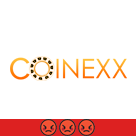 Coinexx (2017)
Leverage: up to 1:500
Deposit: from 0.0001 BTC
Spreads:
Coinexx (2017)
Leverage: up to 1:500
Deposit: from 0.0001 BTC
Spreads: 





 Turnkey Forex (2016)
Leverage: up to 1:400
Deposit: from 5 USD
Spreads:
Turnkey Forex (2016)
Leverage: up to 1:400
Deposit: from 5 USD
Spreads: 




 HugoFX (2017)
Leverage: up to 1:500
Deposit: from 10 USD
Spreads:
HugoFX (2017)
Leverage: up to 1:500
Deposit: from 10 USD
Spreads: 


 CryptoBo (2018)
Leverage: up to ---
Deposit: from 0.0001 BTC
Spreads:
CryptoBo (2018)
Leverage: up to ---
Deposit: from 0.0001 BTC
Spreads: 
Over the last decades, the forex market in the US has emerged as one of the most regulated markets anywhere in the world. Rules that were introduced and backed up by Federal laws have made it very difficult for brokers and traders alike to operate in the US forex market. For many years, only three brokers operated in the US forex market: Oanda, GAIN Capital LLC (Forex.com) and TD Ameritrade. Others were either put out of business or were forced to close down as a result of the strangulating environment created by the regulators, backed up by the Dodd-Frank Wall Street Reform and Consumer Protection Act of 2010.
After the global financial crisis of 2008 which had its origins in the US subprime mortgage market, there were general calls for better regulation of the various markets operating in the United States. The Dodd-Frank Act was a direct consequence of this agitation. This law strengthened the Commodities and Futures Trading Commission, enabling it to oversee not just the conventional financial markets, but also the swaps market which was valued in trillions of dollars.
Changes to the way business was conducted in the US financial markets were sweeping and aggressive. Some of the changes which were directly targeted at the retail segment of the market were as follows:
According to the CFTC, these rules were meant to protect the retail clients from overexposing their money to the market and from taking excessive risk. But to what extent these rules have actually protected the retail consumers of forex products in the US is anyone's wildest guess.
What the regulators of the US financial markets will not readily reveal, is that many traders in the US simply exited the US market and migrated their accounts to brokerage platforms in other countries. Forex brokers located in the US have had whatever market share they had badly eroded, and brokers without the kind of purposeful structure that the former US brokers suddenly emerged as less desirable but ready alternatives to traders who were unwilling to trade under the new conditions in the US.
In other words, the Dodd-Frank Act actually stifled the forex brokerage business in America and the statistics do not lie. During the good times, more than 40 retail FX brokers were serving both US and international clients. Ever since Dodd-Frank became law, that number dwindled to the three brokers mentioned above, and the international clientele base simply moved away from the US and on to brokerages in the UK, Europe, Australia and the Caribbean. A lot of the damage in the US forex brokerage business environment came as a result of the $20million bond which was imposed as a requirement for starting a forex brokerage business in the US. Tax reporting requirements have also scared off many brokerages from accepting US clients. Clearly, no foreign forex company wants to get the same kind of attention that Huawei got from the US government in 2019, or what TikTok got in 2020.
In 2019, some brokers made moves to re-enter the US market. Unfortunately, the COVID-19 pandemic slowed down the process dramatically. Still, some new brokers managed to enter the US forex market in recent years, so traders now have more choice than before.
So what is the current state of the US market as it concerns US Forex traders?
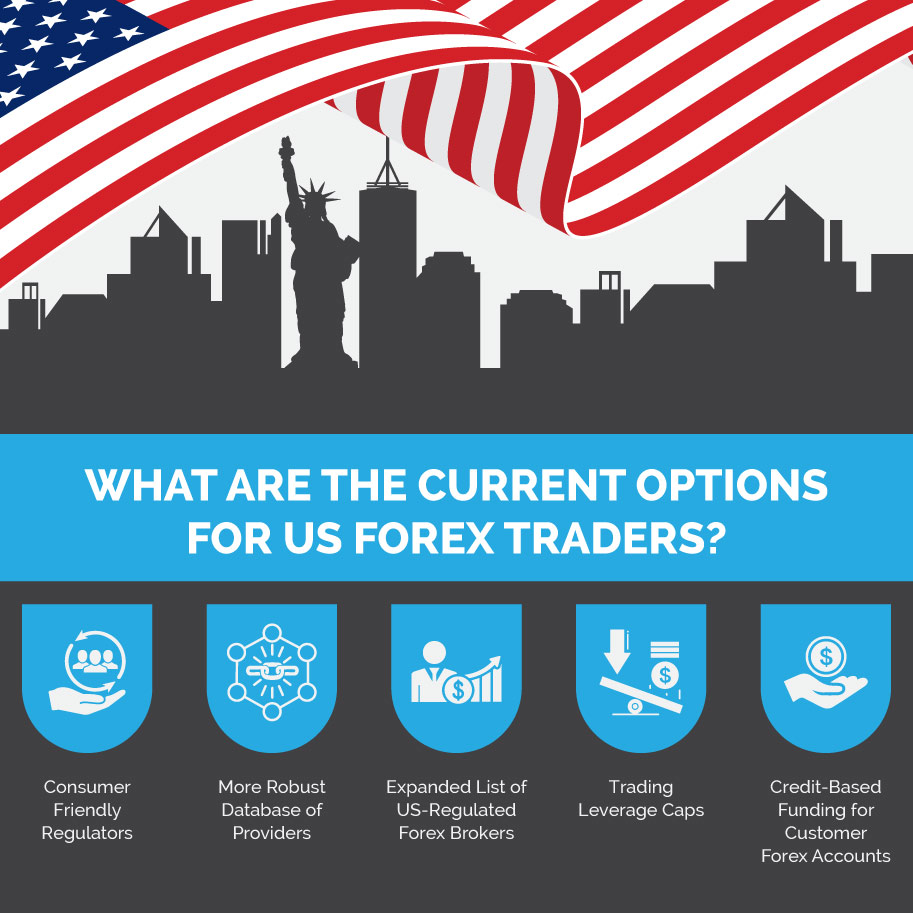
Regulators in the US have made a series of changes designed to improve trading outcomes for US forex traders. For instance, the Commodities and Futures Trading Commission (CFTC) has made its weekly CFTC Positioning Report (also known as the Commitment of Traders Report, or COT) more readily available. This report shows what the major players in the commodities and currency markets are doing. Using this information, summaries of which are found on some MT4 platforms of US forex brokers, traders can consider their positions against the backdrop of the institutional speculators are trading. This provides for more informed trade decisions.
Additionally, the CFTC is now more reachable as a number of channels are now open so the public can make complaints or submit inquiries and observations.
Everyone working in the industry must be registered with the CFTC and NFA. The NFA has taken it a step further by requiring biometric registration of those who provide services to traders, be it brokerage services or fund management. This biometric information can be shared with the Federal Bureau of Investigation (FBI), and this has been a strong deterrence against wrongdoing by brokers. When last did you hear of US forex brokers swindling customers of their funds?
The CFTC database of providers is very vast. All floor traders/brokers, introducing brokers, swap dealers, retail forex dealers, commodities pool operators (CPOs) and commodities trading advisors (CTAs) who are licensed to provide services to US forex traders are all on this database.
If you are approached by anyone claiming to be any of these, you can easily contact the CFTC for near-instant verification. Even those who are not listed on the CFTC database by reason of exemption must appear on the NFA database, and the reason for the CFTC exemption provided.
There used to be a time when more than 70 brokers operated in the US forex market. The Dodd-Frank Act thinned them out to just 3, and it remained this way for a nearly a decade. At the present day, there are now 8 regulated forex brokers in the US. Oanda, Forex.com (GAIN Capital) and TD Ameritrade retained their positions, and are now joined by ATC Brokers, IG US, Interactive Brokers, Ally Invest and ThinkorSwim (now owned by TD Ameritrade).
The 2018 ESMA Rules in Europe forced all local brokers to set a 1:30 leverage limit for all major FX currency pairs. In the US, this cap remains at the 1:50 level introduced in 2010. US forex traders will continue to enjoy what now seems to be the most liberal leverage caps in the Tier 1 regulatory jurisdictions.
Bank drafts and direct debits from a bank-linked ATM card are now the recognized means of account funding for US forex traders. The use of credit cards is now prohibited.
These are some of the changes that US forex traders have faced in 2020. 2020 also marked the year of the COVID-19 global pandemic that has completely changed the face of the global economy. However, while many other economic sectors have been badly hit, forex trading and other forms of financial market activity have thrived. In fact, the massive job losses and furloughs across the world that left millions without a source of income, drove the same people to the financial markets. Many brokerages have witnessed a surge in new trading account registrations as well as inquiries about trading. COVID-19 has changed the face of financial trading and it is likely that a number of changes as to how forex is traded in the US are coming.
What changes can US forex traders hope to see in 2026 and beyond? Overall, no significant upcoming changes are expected in the US retail forex space. However, there could be some changes in certain areas.
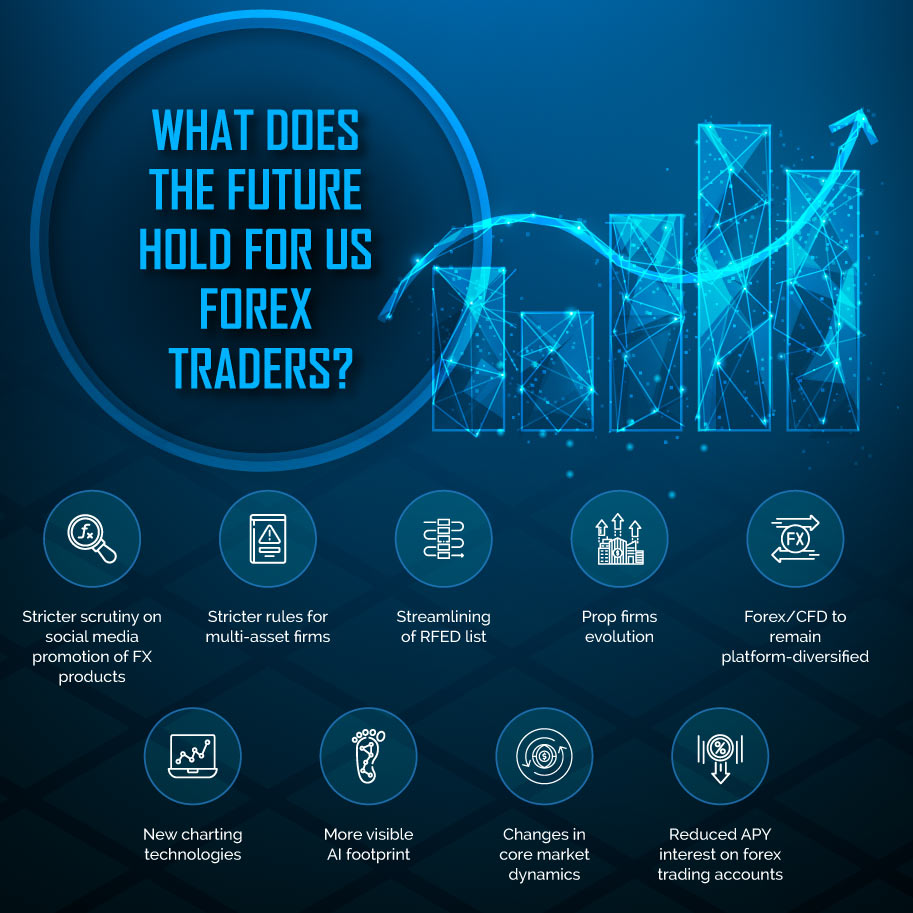
The recent crackdowns on social media influencers and the marketing of forex products in other jurisdictions make one wonder how long it will be before US regulators start to crack down on this aspect of the US forex trading industry.
Given the CFTC's renewed emphasis on proactive protections for retail clients and detection of potential retail trading fraud, 2026 is likely to see social-driven acquisition funnels targeting US residents come under greater scrutiny.
For NFA members who offer assets across several classes (e.g., crypto), stricter oversight may be on the way. The NFA is pushing for more unified regulatory standards across the FX and digital asset product spaces.
As of 2023, eight (8) Retail Foreign Exchange Dealers (RFEDs or regulated forex brokers) operated in the US: Oanda, Forex.com (GAIN Capital, TD Ameritrade, ATC Brokers, IG US, Interactive Brokers, Ally Invest, and ThinkorSwim (now owned by TD Ameritrade).
That list has now been streamlined further, as some of the RFEDs have either changed their business model or come under new ownership. In 2026, the US-registered RFEDs are:
Interactive Brokers (IBKR) offers spot currency trading, but only as a component of its multi-asset platform. It therefore goes beyond the traditional OTC-forex-only offering.
TD Ameritrade has abandoned the OTC-forex model following its acquisition by Charles Schwab. US forex traders can access the OTC forex offering only via the ThinkorSwim brand. Prospective US forex traders must pass an eligibility test before onboarding. Residents of Arizona and Ohio are not permitted to open forex accounts on Charles Schwab.
The MyForexFunds ruling looks set to transform the US prop firm landscape in 2026. We could see larger prop firms moving into more futures-driven, "compliance-conscious" business models. This evolution will split US retail forex into two categories:
TopStep is a prop firm that typifies the new model for the US markets. It has integrated with a regulated futures infrastructure while still relying on regulated brokerages to provide the technology to power its brokerage operations.
The Ukraine war saw many Russian entities suffer global crackdowns. MetaQuotes powers the MT4 and MT5 platforms, which are easily the most popular retail forex trading platforms in the world. This Russian company saw its platforms delisted on the app stores of Google and Apple in early 2024. This forced many retail-style prop firms serving US traders to ditch the MetaTrader and move to alternatives (TradeLocker, MatchTrader, DXtrade, cTrader).
MetaTrader has yet to regain its former foothold in the prop firm space, leaving the US prop firm platform diversified. Expect more platforms to hit the market in 2026.
For a long time, the most popular charts used in retail forex have been the bar charts and the candlestick charts. Other charts have been introduced in the last few years (Renko, HLC area, baseline, column, high-low, volume candle charts, etc. However, these charts have failed to catch the attention of retail traders.
A new chart type is set to make a mainstream entrance into the world of retail forex in 2026. This is the Volume Footprint chart. Volume Footprint charts, which are now found on TradingView for Premium subscribers, use the order flow information to create a visual display of the order volumes occurring on each candle. This chart allows the trader to see where the banks and institutional traders are setting their orders and taking action. Considered a revolutionary charting system never before available to retail traders, Volume Footprint charts could find more mainstream use in 2026 and beyond.
A 2019 study by MarketsandMarkets estimated that sales of new technology products in the financial trading industry would hit an estimated $18.8 billion by the end of 2023, representing a Compound Annual Growth Rate of 11.1% in the period under consideration (2019-2023). CAGR forecasts for 2021 and 2030 were boosted to 13.6%, with sales expected to hit $31.30 billion by the end of the decade.
A lot of this growth is expected to come from Artificial intelligence (AI) tools, machine learning, big data and an increase in the market share of cloud-based solutions. North America continues to be the dominant region in terms of development and deployment of AI technologies in trading. However, the Asia-Pacific region is starting to emerge as a key market for these products.
AI is making a gradual but sure entry into the forex trading space. The AI market footprint is being felt not just in the core trading space, but is finding expression in market analytics. The fundamentals behind AI is machine learning, which involves feeding the AI model with large volumes of data so it can spot patterns and trends that repeat themselves over time and which produce the same outcomes time and time again. Natural language processing is now being used to scan the regular and alternative sources of news and data to produce algorithms that can make rational trading decisions which are devoid of emotional impact.
With AI gradually but surely becoming a part of the markets, one aspect of its deployment that will come under scrutiny is whether the use of AI models in financial trading will meet ethical and regulatory standards. A lack of regulatory clarity still exists, as is usually the cause of new, disruptive technologies. Going forward, traders can expect to see more push by regulatory agencies to set the boundaries within which AI models and algorithms can be used in the market. Regulators do not like to see market distortions and flash spikes/crashes as have been the case with the use of high-frequency trading software.
New fundamental influences that will translate to a change in the core market dynamics are projected for 2026 and beyond. Some of these are as follows:
How will these changes impact US forex traders?
► Increased volatility on the US Dollar and Gold
Central banks across the world have started to unwind the tight monetary policy regimens instituted to combat the inflation that followed the inflow of stimulus cash into the global economy at the onset of the pandemic. As the unwinding continues, volatility on Gold and the US Dollar is expected to increase. Gold hit new record highs in late December 2025, surging past $4500, with loads of volatility following its climb to that point. US forex traders can expect to see more of this going forward.
► Yen-based carry trades will wind down
The projections for further easing of interest rates in the US and an increase in real rates in Japan will see the collapse of Yen-based carry trades. The carry trade is the practice of buying a currency with a higher interest rate and simultaneously selling a lower-yielding currency so as to profit from the interest rate differential between both currencies.
The Yen has long been favoured as a carry trade candidate because Japan has operated a negative interest rate regime for more than two decades. With interest rates at decade-record highs in the US, UK, Australia and New Zealand for 2022 and most of 2023 in an attempt to reign in post-COVID global inflation, the carry trade flourished. However, central banks in these countries have started easing rates at the same time that the Bank of Japan is increasing interest rates for the first time in many years. These actions have narrowed the interest rate differential between the Yen and the Pound, US Dollar, Aussie Dollar and Kiwi Dollar.
► Changes in interest rates
The central bank actions on easing interest rates look set to take hold in the Central and Eastern European (CEE) countries. The pairing of the US Dollar with the dominant CEE currencies (SEK, NOK, PLN, HUF) constitute the more liquid of the exotic currency pairings. US forex traders can take advantage of the exchange rate dynamics of the US Dollar and these currencies to set up trading opportunities that could be very profitable down the road.
It is a normal practice among many forex brokers to pay their clients an annual percentage yield (APY) interest on their average daily available margin. For US forex traders, this is usually based on the 2023 monthly retail forex obligation reports published by the US Commodities and Futures Trading Commission (CFTC).
This APY interest is usually not too far removed from the prevailing interest rate of the country. With the US Federal Reserve now moving into an interest rate cutting cycle, the APY interest is set to decline on a year-on-year basis, starting from 2026. Most forex brokers that pay US traders the APY interest pay out at 5%; this rate faces a decline as from 2026.
One of the best things that consumers of any product can enjoy is the power to choose, and to be able to make that choice from a wide range of service providers. This is what the Dodd-Frank law has taken away from US forex traders… but things have changed. Aside from a few forex brokerages operating in the US, there are a number of offshore forex brokers expressing willingness to take US traders on their platforms.
There are a number of advantages and also drawbacks to this arrangement. In terms of benefits, this is what US forex traders will enjoy when they use the offshore brokers presented in the list above.
The brokers featured in the list above have been carefully selected to offer you a forex brokerage service that rivals what you can get anywhere in the world, and under non-restrictive conditions. They are great for beginners who can make a transition from a demo account to a lightly funded live account, just to ensure they can understand what live trading is all about before they get more heavily committed. ECN style accounts are also available for those who prefer to trade directly with the FX interbank market. There is a lot of choice for you as you go through this list of brokers, one after the other.